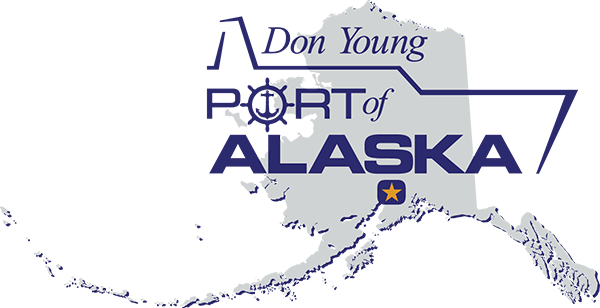PORT OF ALASKA MODERNIZATION PROGRAM
‾‾‾‾‾‾‾
The Port of Alaska Modernization Program (PAMP) was created in 2014 to provide four new terminals via a phased program comprising multiple projects.
Safeguarding Alaska’s most critical port for future generations
Port of Alaska is a critical transportation hub for the state of Alaska. Interior Alaskan communities, military facilities, mining operations and rural Native Alaskan villages rely on the Port for consistent access to critical supplies. Food, consumer goods, building materials and cars all pass through the Port. Replacing existing Port facilities is key to ensuring the continued vitality of Alaska and ensures food security for Alaskans.
![]()
Transportation hub that handles 75% of Alaska’s inbound cargo.
![]()
Drives $14 billion in statewide economic activity annually.
![]()
Supplies 90% of Alaskans with life-sustaining necessities.
The first of four terminals, the Petroleum Cement Terminal, was completed in 2022. The foundations of the remaining three terminals that make up Port of Alaska are corroded and have begun to split apart. Steel sleeves have been installed to help maintain their functionality, but they have also nearly reached their design life. The original terminals were constructed between the late 1950s and 1970s. The Port has already begun imposing operational restrictions on the older terminals and future operational restrictions will eventually affect operations.
The goal of the Port of Alaska Modernization Program is to replace Anchorage’s aging docks and allow the Port to continue its three critical functions:

Serve as Alaska’s key
inbound cargo gateway.

Operate critical national defense infrastructure.

Support the movement of consumer goods,
industrial development,
and disaster recovery.
Safe, reliable and cost-effective Port operations
The program was created in 2014 to replace the four aging terminals and stabilize the failing North Extension, a project partially completed as a part the Port Intermodal Expansion Program in 2009. The program, comprising multiple projects, will address the deteriorating conditions of the Port’s marine facilities, including corrosion and loss of load-bearing capacity.
Once complete, the program will ensure safe, reliable, and cost-effective Port operations. In addition to completing the Petroleum and Cement Terminal PCT, the Port has successfully relocated the Port of Alaska’s administration building and progressed a significant amount of work to stabilize a critical section of the North Extension.
Each of the new terminals will be replaced with a similar, more modern terminal designed to last 75 years. They will also accommodate new and larger vessels and adhere to the latest seismic design standards. Because Port of Alaska is critical to transportation, it must remain operational during construction, requiring a carefully planned and phased approach.
Program benefits
The new facilities will have many benefits, including:
![]()
Improved operational safety and efficiency.
![]()
Accommodations for modern shipping operations.
![]()
Improved resiliency to survive extreme seismic events and sustain ongoing cargo operations.
Program funding
PAMP will be funded through a combination of federal and state grants, and Port of Alaska revenue bonds repaid through a tariff surcharge. Projects can begin when funding requirements are met, and delays will likely translate to increased costs.
Projects overview
PAMP comprises several projects. Hover over each project to learn more.









To learn about each of these projects, visit the Projects section.
Program timeline
Below is an overview of the current project schedule.
Working in Cook Inlet
Port of Alaska is located in an environment that presents challenges for construction.

Ice floes limit the in-water construction season to just 6 months per year.
With a range of almost 40 feet, the tides in Cook Inlet are the highest in the United States.
The presence of Cook Inlet beluga whales requires special operations and severely restricts design flexibility and construction methods.
Don Young Port of Alaska
Address:
2000 Anchorage Port Road
Anchorage, Alaska 99501
For more information or questions about PAMP, please email
portofalaska@anchorageak.gov
Copyright © 2025 Port of Alaska Modernization Program. All Rights Reserved.


